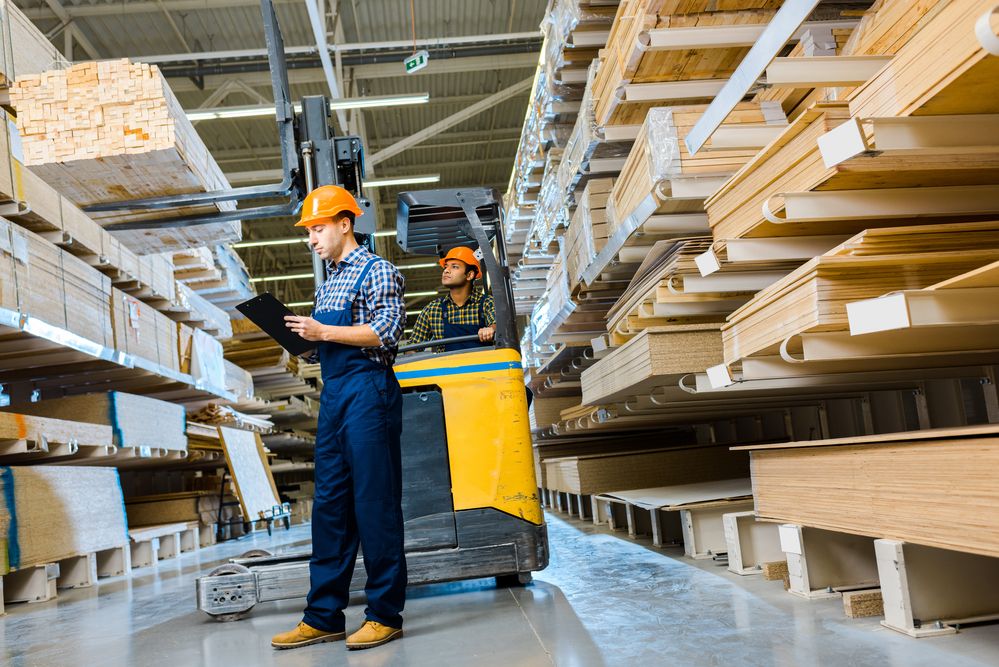Overhaul is a crucial step, approach which is worth deliberately, making an estimate in advance and choosing not only the color of the wallpaper, but also materials, which will not be visible under the new parquet. If your next step is interior decoration or laminate flooring, we advise you to familiarize yourself with the materials, which are used for this.
In construction and finishing works, they are equally widely used as plywood, and OSB (OSP). These canvases are loved for their high strength and versatility.: they are used to make furniture and supporting structures, sheathe the walls, flooring. try to understand, what are they, what are their differences and what is better to choose.
Plywood
Material, striped peeled veneer, glued together. Made of wood, therefore it is possible to state that, that it is environmentally friendly. It is very popular in construction, including because, which lends itself to various types of treatments: varnishing, polishing, painting, etc..
Types of plywood
There are several types. They depend on raw materials, from which are made, as well as production technology, and destination.
The two most popular types are - FK (based urea formaldehyde glue) and FSF (on resin glue with phenol formaldehyde). Both are moisture resistant, but FC plywoods tend to swell from a lot of moisture. This is because, what is it made of glue, which tolerates moisture worse, than that, what is used in the FSF. Most often, FC plywood is used for wall decoration.. One of the key advantages of FC is low cost.
Suitable for installation in the bathroom FB-plywood. In its manufacture, use bakelite varnish, which increases moisture resistance.
FBA-plywood (glued with natural albuminocasein), in front of, absolutely do not tolerate moisture. It is a material for dry rooms, such as bedrooms or living rooms.

OSB or OSP
A relatively young building material - its production began in 1982 year. Consists of wood shavings and wood chips. They are glued together with mixtures of resin with boric acid and wax.. Plates of this type are durable, elastic and have a low price, what makes them attractive to buyers.
Synonymous names OSB or OSB is an abbreviation for "oriented strand board", или Oriented Strand Board (the same in english).
Types of OSB
Oriented strand board classification includes four types:
- OSP-1. Find use in the furniture making process, as well as cladding.
- OSP-2. Used to create load-bearing structures.
- OSP-3. They are used to make supporting structures in conditions of high humidity.. Is the most preferred material for the Russian climate.
The assortment of high quality OSB-3 boards can be found in the catalog of the Stroylandiya online store - https://stroylandiya.ru/catalog/osb-plity/ - OSP-4. It is used in conditions of high humidity and under significant mechanical stress.
FSF-plywood or OSB-3?
Starting construction work, many are wondering - what to choose from all this? Let's take a look at the options available. First of all, it would be a big mistake to choose FC-plywood and OSB-4 for comparison, since these materials are in different categories. For the purity of the experiment, it is worth taking, for example, FSF-plywood and OSB-3.
Strength
By themselves and plywood, and OSB are very durable materials. but, due to the different manufacturing technology, can be concluded, that plywood reacts better to high pressure. Research confirms this.. FSF is stronger than OSB - almost in 4 times for compression and fold. After contact with water, plywood also performs better.. This leads to a reasonable question: how these materials react to moisture?
Humidity resistance
When the plywood absorbs water, there is a risk of, that the process of decay will begin inside. OSB, on the other hand, show the best result - they react more slowly to moisture.. It becomes obvious, that in conditions of high humidity it is better to use particle boards, as plywood will deteriorate much faster.
cost of
Oriented strand board begins production in Canada, as a cheaper analogue of plywood. And then the question arises - why now the price for them is higher relative to their fellow? In truth, this equation is valid only for Russia, because the production of OSB here has not yet been established in the same volume, in view of the novelty of this material.
results
Summarizing, highlight the main advantages of both types of building materials.
OSB has much more advantages, than disadvantages. Among them:
- long service life;
- humidity;
- flexibility;
- strength;
- environmental friendliness;
- easy to process.
Oriented strand materials are perfect for internal and external cladding of buildings and the manufacture of load-bearing structures in high humidity conditions.
Plywood also has a number of advantages., which make it attractive to buyers:
- strength;
- low price;
- resistance to fungi;
- high level of noise insulation;
- aesthetically beautiful appearance of the product.
Plywood should be considered when choosing a lining for laying under parquet, laminate or linoleum. It is a favorable material for creating an even coating due to its resistance to mold and its high strength..
So all the same - OSB or plywood? It is impossible to answer this question unequivocally.. It all depends on the conditions, in which the building material will be used. To forget about flooring for a long time, make your choices intelligently, based on the characteristics of the room and the personal qualities of each of the paintings.












